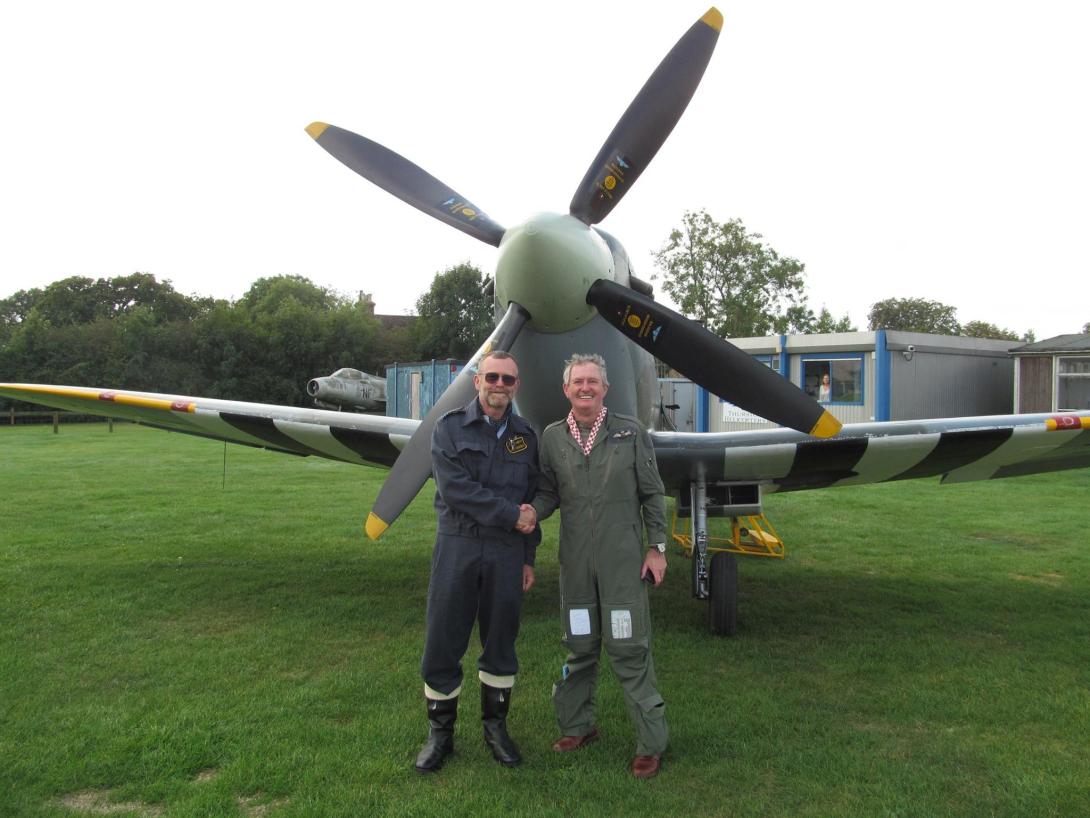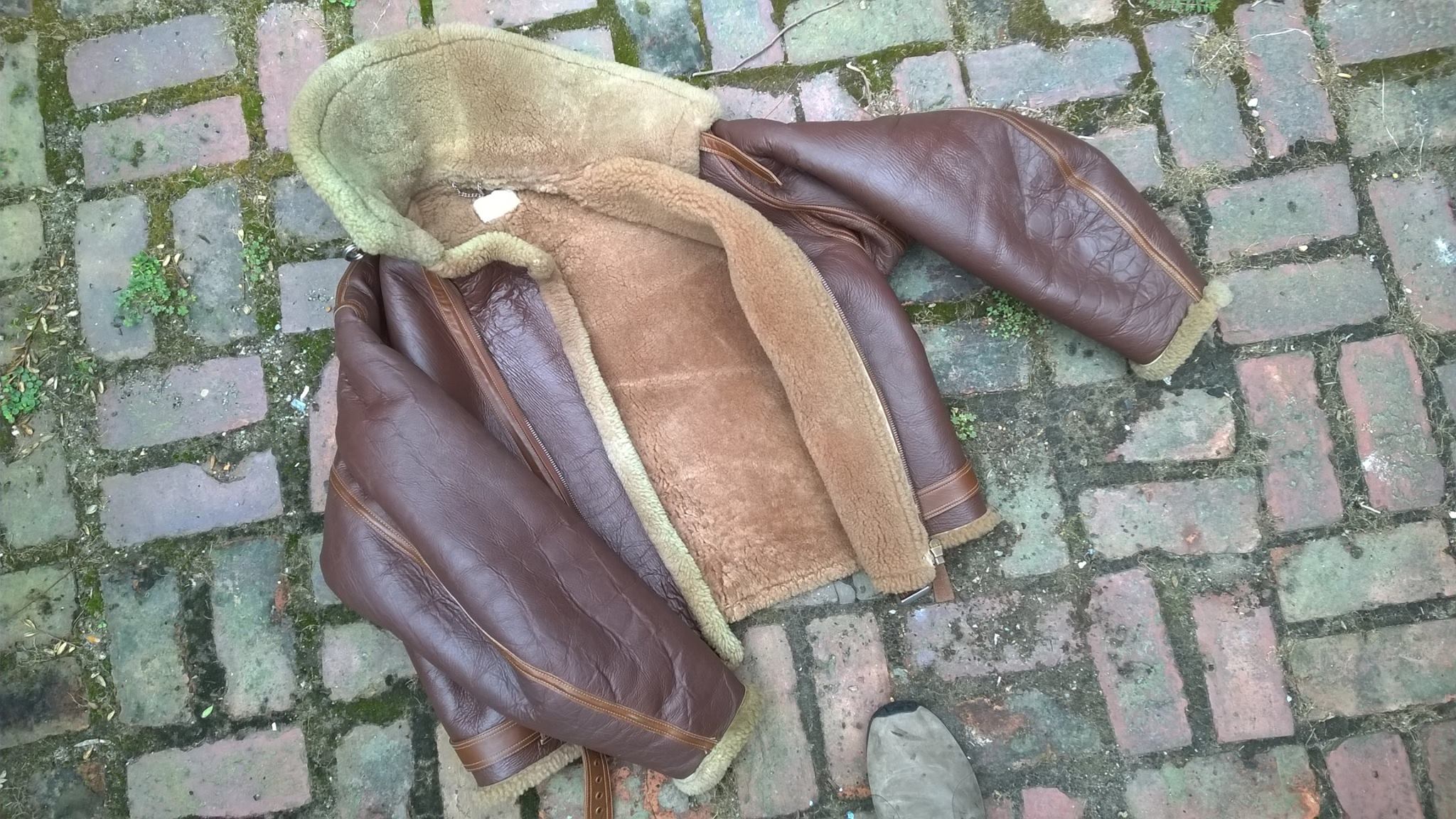
In addition to collecting this equipment - I have flown in most of it. Some in a WWII Spitfire.

The leather helmet kept your earphones in place. The goggles protected your eyes if splinters and broken glass started to fly around inside the cockpit. The leather gauntlets are beautiful thin leather lined with very fine sheepskin and kept your hands warm. Many pilots flew without them for better "feel". The consequences for their hands in a cockpit fire (the main fuel tank was just behind the instrument panel in both the Hurricane and Spitfire) was pretty horrific. Many pilots managed to bale out but their hands could no longer operate the rip cord on their parachute.
Missing is the oxygen mask which held the microphone to your face. (The American's used throat mics). In 1940 the oxygen mask was a leaky canvas affair and an oxygen bottle might last 20 mins of high altitude combat before running out. Many planes were seen to spin in with hypoxic pilots unaware they were out of oxygen. This happened a lot to Hurricane pilots. Spitfire pilots were a little luckier - the Spitfire tended to recover and fly a slow glide at low altitude and the pilot had time to come around. By 1941 the mask was rubber with a tight fitting seal and a rebreather - the same oxygen bottle would now last 90 mins which was about the fuel endurance of the fighter. Obtaining either in prototypical or replica is hard to do and I don't have anything at this time.
--

The Irwin flying jacket was the standard way of attempting to stay warm in open cockpit trainers through fighters and bombers. It was short and high around the waist to keep movement easier. Early prewar models (like this 1940 jacket) were made of large singular panels of leather. As the war progressed - and wastage became an issue - the jackets became veritable jigsaws of smaller and smaller bits of leather!
--

1940 Service Dress - you were expected to fly in this! It never looked well pressed! The design was against it - that and the capacious pockets in which you could keep all manner of stuff. RAF pilots fought in this get up during the Battle of Britain. Complete with studded collar and black tie. They would have swapped their bulled boots (shoes) for flying boots. You probably flew exactly ONCE like this and then adapted your uniform very rapidly to circumstance if you survived the first flight.
The stud collar and tie were ditched immediately and a silk cravat was worn to protect against neck chafe as you constantly twisted to look behind you and checked your six.
Fighter pilots always wore their uniform "top button undone". It was not just affectation and the mark of a fighter pilot - it gave you more freedom of movement around the shoulders when flying.
With summer temperatures on the ground in the 70's F and around -11F at 25,000ft you either overheated or froze. Most pilots ditched the jacket and shirt and wore a wool turtle neck sweater. Some flew in their shirt sleeves - the short missions and intensity of the fight meaning they were working so hard and hot anyways.
--

By 1942 the RAF adopted a decent Battle Dress in the cockpit. Nicknamed the "Hairy Mary" for the coarse wool it was made of - there were no brass buttons to polish - they are steel painted black and under a seam so they could not catch on straps. Trousers are still hung on braces (suspenders to you Americans) and the emergency whistle is attached to the top buttonhole in case you found yourself swimming. The silk neck cravat was standard and the white turtleneck "submarine" sweater - borrowed from the navy - kept the pilot warm. Though in practice there were many colours of the same turtleneck sweater.
The forage style cap was an option that was not particularly popular. Most officer pilots stuck with the peaked cap.
The boots in this picture are highly prized 1936 pattern flying boots - sheepskin lined all the way up the calf. By 1940 as an economy measure the calf part of the boot was made of canvas and was universally hated. The canvas got wet on the grass at the airfield and then froze stiff at altitude making the boots painful to wear. Later models were completely redesigned to look like a civilian shoe with a leather sheepskin upper. If you baled out over enemy territory - you could cut the boot down by removing the upper and make them look like civilian shoes while you were on the run.